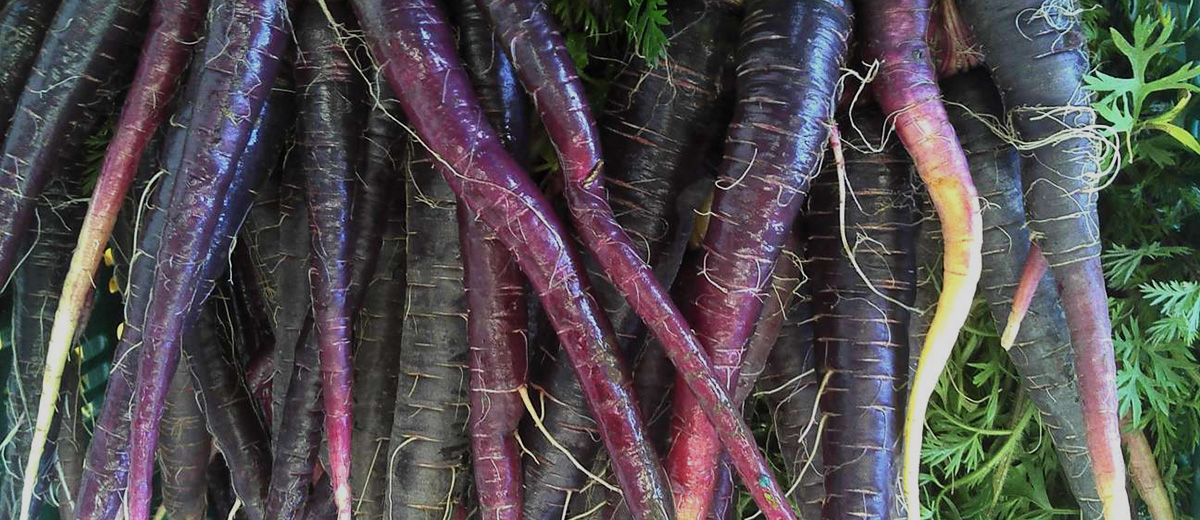Seasons/Availability
Purple carrots are available year round.
Current Facts
Carrots, botanical name Daucus Carota subs. sativus, belong to the Umbelliferae family along with parsnips, fennel caraway, cumin and dill. Each plant in this family has the umbrella-like flower clusters that characterize this family of plants. Major plant pigments include carotenoids, anthocyanins and other flavonoids, betalains, and chlorophylls. Purple carrots contain the plant pigment, anthocyanin, which is directly responsible for its skin’s colouring.
Description/Taste
Purple carrots have a narrow conical and taper-shaped root that comes to a long thin thread-like point. Their wine-colored skin thinly encases a crisp orange hued core, often the orange will blush the root’s skin. The root retains its color through light cooking, however loosing its vibrant color appeal as it cooks longer. Its texture is crisp and firm. Its flavor is both consistently earthy sweet with undertones of celery and parsley.
Nutritional Value
Purple carrots contain high levels of anthocyanins which are potent antioxidants that are being heavily researched for their potential health benefits, including anti-cancer, anti-inflammation and pain reduction as well as the potential for treating neurological dysfunctions.
Applications
Purple carrots are utilized primarily as a fresh eating table carrot. Excess carrots can also be canned, juiced, frozen. They can be used for any recipe, raw or cooked, simply calling for carrots. Young Purple carrots require no peeling, making them entirely edible while also requiring little prep time. They make a quintessential salad, crudite and soup ingredient. Purple carrots pair well with other root vegetables and members of the Umbelliferae family especially parsnip, dill and fennel. They also pair well with bacon, butter, radishes, hazelnuts, olive oil, cheeses, especially cheddar, parmesan and pecorino, cream, ginger, cardamon, potatoes, mushrooms, garlic, shallots, tomatoes, red wine and balsamic vinegar. Purople carrots have an inherently lower shelf-life than Western carrot varieties, thus they cannot be treated like a winter cellar vegetable. Never store fruit along with carrots. All fruit expels ethylene gas that is readily absorbed by carrots. Carrots exposed to ethylene turn very bitter making them unsuitable for eating.
Geography/History
Purple carrot varieties are actually one of the first originally cultivated varieties among all carrot colors. They can trace their origins back to the Middle East region of what is modern day Afghanistan. Purple carrots were historically used as a clothing dye by Afghan royalty. Now Purple carrots are being rediscovered as a potential natural source for food colorings.
Text content courtesy of Specialty Produce.


